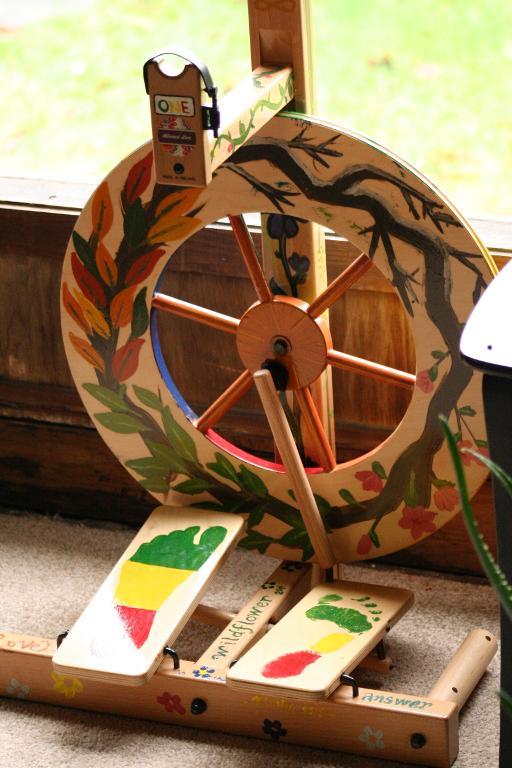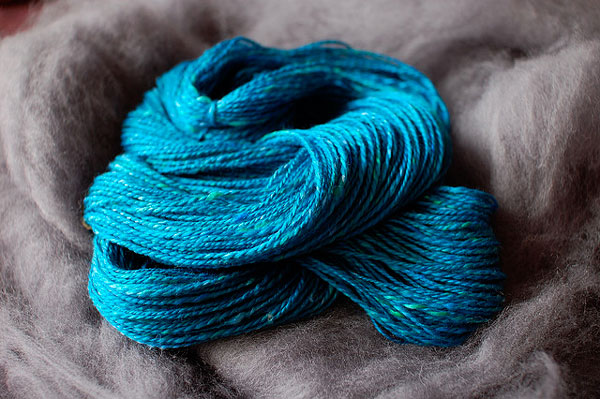Shopping for a spinning wheel is similar to shopping for a major appliance or a car. There are so many models available, how do you know what’s right for you? They’ll all do the job, but consider: What do you have room for? What do you want to spin? What extra parts and accessories do you want? If you’re lucky enough to have a local spinning shop near you, that’s a great place to start!
Here are a few tips for choosing the best spinning wheel for you.

Photo via Pixabay
Try before you buy.
It’s always better to have a little bit of experience with any new spinning tool, whether it’s a drop spindle or a spinning wheel. If you’re brand new to spinning, it’s a little tougher to figure out what features you might need (or not). A friend with spinning experience is a good thing to have around, and they might even let you borrow one of their wheels! Ask your local yarn shop if they carry spinning wheels you can try out in the shop or rent to take home. Take a beginner spinning class to learn how the wheel works and what you find useful and comfortable.
Single or double treadle?
When it comes to the types of yarn you can make, single or double treadle doesn’t really matter at all. It’s purely a question of your comfort in spinning. Older wheels are often single treadle, and some new wheels are available as single or double treadle. Try both and see what you like. Whatever you choose should move smoothly and quietly.

Photo via Bluprint member vanillaisis
New or used?
Used wheels can offer excellent value as well as a good story, but only if they’re in good shape! If you’re looking at a wheel that was actually used by a handspinner recently, odds are that they’ll be in reasonably good condition with all the pertinent working parts. However, there are also lots of wheels around that were separated from important parts along the way. If you know your spinning wheel parts, you might be able to suss out whether a used wheel is complete. When it comes to replacement parts, bobbins and accessories, a used wheel can be challenging. If it’s available as a current model, you should be able to find new replacement parts easily. However, with antique spinning wheels, getting new parts might involve a woodworker who can create or duplicate something that will work for you.
New spinning wheels, on the other hand, provide a bit more security out of the box. Brand new wheels come with everything you need, and it’s easy to find replacement parts and accessories. If there’s something wrong with your new wheel, it’s much easier to get it fixed. New wheels are generally more expensive than used ones but there are wheels available for a variety of prices.

Photo via Laura Chau
What do you want to spin?
This is a big question! An experienced handspinner can usually work with any setup, but some spinning wheels are less suitable for certain types of yarns. Some wheels have different types of flyers available to aid in spinning certain yarns. A fast flyer and large-core bobbin are useful if you’re spinning very fine, high twist yarns, whereas a larger flyer and bobbin will help you fit more thicker, plied or art yarn into a skein. When you’re starting out, look for a wheel with versatility—several ratios on a regular medium flyer will allow you to spin a variety of thicknesses and with varying twist. You might find that what you want to spin will change over time so it’s good to get something flexible.
Photo via Laura Chau
What size is right?
What do you have room for? Spinning wheels come in a variety of sizes, from very small and portable to very large walking wheels. If you’re short on space, look for a castle-style model that has a small footprint or can fold up for storage. If you want a wheel that you can take with you to meetups and festivals, look for something that comes with a carrying bag. If you have lots of room and want something you can display when not in use, make sure you love the aesthetics of your new spinning wheel!
Make sure you can adjust your wheel to fit you perfectly, whatever size you are. A different height of chair or a small adjustment to the height of a flyer can make a big difference in your spinning comfort.
Shop around.
Lastly, don’t rush into anything! Choosing a spinning wheel is a big decision. Look around for different prices on the same model, or extras such as free shipping, additional parts or fiber. See if there are any fiber festivals near you that might offer different wheels to try out or even a cash-and-carry discount. If you’re not in the market for a wheel right now but might be in the future, keep an eye out for different features and styles.


Share tips, start a discussion or ask one of our experts or other students a question.
No Responses to “Spinning Basics: Choosing a Spinning Wheel”